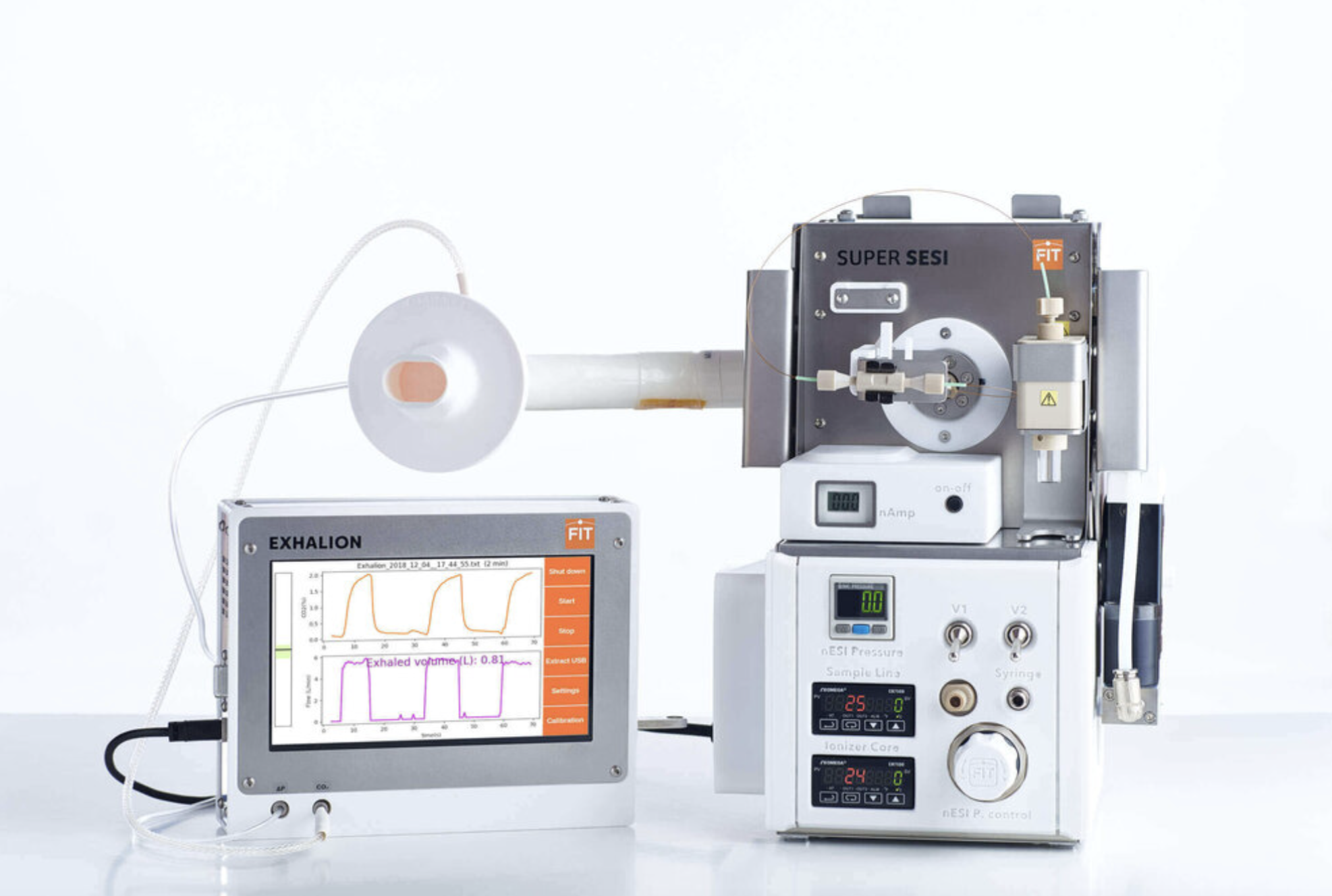Identification of disease-specific molecular breath profiles in patients with allergic asthma
Ronja Weber, Srdjan Micic, Bettina Streckenbach, Lara Welti, Tobias Bruderer, Nathan Perkins, Demet Inci, Jakob Usemann, Alexander Möller
Abstract
The diagnosis of asthma in children is still a clinical challenge. Breath-analysis has the potential to overcome this challenge. Our goal is to show that secondary electrospray ionization high-resolution mass-spectrometry (SESI-HRMS) can be used to detect asthma-specific metabolites in exhaled breath.
We are conducting an exploratory observational study comparing the molecular composition of exhaled breath from school children (5-18 years) with allergic asthma (confirmed by objective tests) to healthy controls. Patients are taken off their asthma medication two weeks prior to breath measurements. Breath analysis is performed on an AB SCIEX TripleTOF 5600+ HRMS coupled to a Super SESI ion source, detecting m/z features between 50 and 500 Da (mass accuracy <1ppm). A combination of data extraction and machine learning models is used to isolate the most discriminative features and assess the predictive power of breath profiles.
We acquired data from 47 children (21 with allergic asthma, 26 healthy controls). In our preliminary data analysis, we identified 193 m/z features which differed significantly between the two groups (adjusted p value < 0.05), which showed an average predictive power (asthma vs. healthy) of 78.7% (leave-one-out cross-validation with Random Forests algorithm). We could allocate molecular formulas to most significant m/z peaks. Compound identification is currently ongoing but some of the compounds have previously been reported in a biological context.
For the first time we identified exhaled molecules that differ between children with allergic asthma and healthy controls by real-time SESI-HRMS. Such a discovery has the potential to improve the early diagnosis of asthma.


